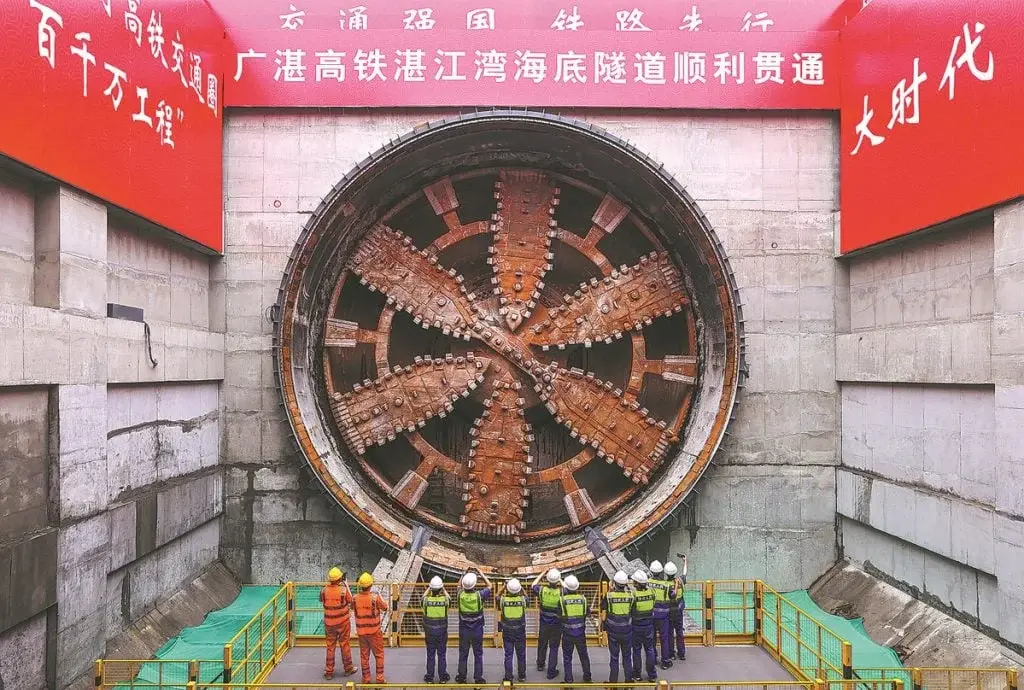China continues to expand its high-speed railway network with the recent achievement of completing a groundbreaking undersea tunnel. The Zhanjiang Bay Undersea Tunnel, a crucial segment of the Guangzhou-Zhanjiang High-speed Railway, represents a significant advancement in the nation's infrastructure landscape.
Engineering Marvel: A Record-breaking Feat
After an intensive construction period lasting 33 months, the tunnel, spanning an impressive 9,640 meters, stands out for having 7,551 meters excavated by a single tunnel boring machine (TBM) known as "Yongxing." This exceptional milestone establishes it as the longest single-headed undersea high-speed railway shield tunnel in China, underscoring the country's exceptional engineering prowess.
Unveiling Innovation: The Single-Headed Approach
The decision to employ a single-headed approach in tunnel construction proved invaluable due to its efficiency and safety advantages, especially in tackling intricate geological conditions. The conventional method involving TBMs digging from both ends and meeting in the middle was deemed unsuitable for the challenges posed by the Zhanjiang Bay project.
Environmental Considerations: Opting for a Tunnel Over a Bridge
Choosing a tunnel over a bridge serves multiple purposes, including safeguarding the picturesque Zhanjiang Bay skyline and reducing the environmental impact on marine ecosystems. Furthermore, a bridge could impede the passage of large vessels and be susceptible to typhoons, a common occurrence in the area. By opting for a subsea tunnel, these concerns are mitigated, ensuring seamless and secure high-speed rail operations even in adverse weather conditions.
This significant tunnel achievement sets the stage for the timely completion of the entire 401-kilometer Guangzhou-Zhanjiang High-speed Railway by the conclusion of 2025. Operating at a designed speed of 350 kilometers per hour, this railway route will play a pivotal role in China's high-speed network. Once operational, the travel duration between Guangzhou and Zhanjiang will be dramatically reduced from over 2.5 hours to a mere 90 minutes. The project is poised to catalyze high-quality development across the region.


Leave a Reply